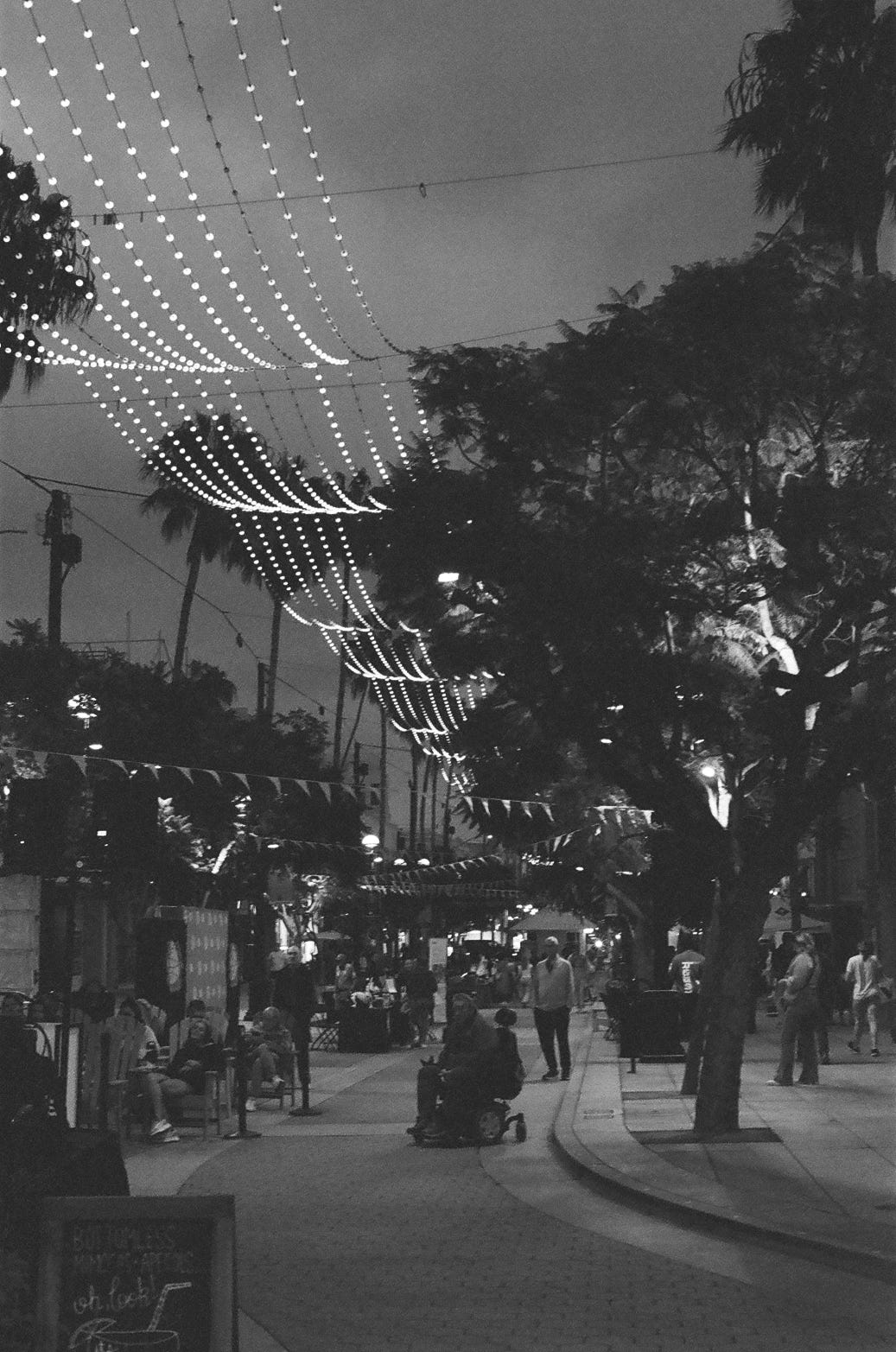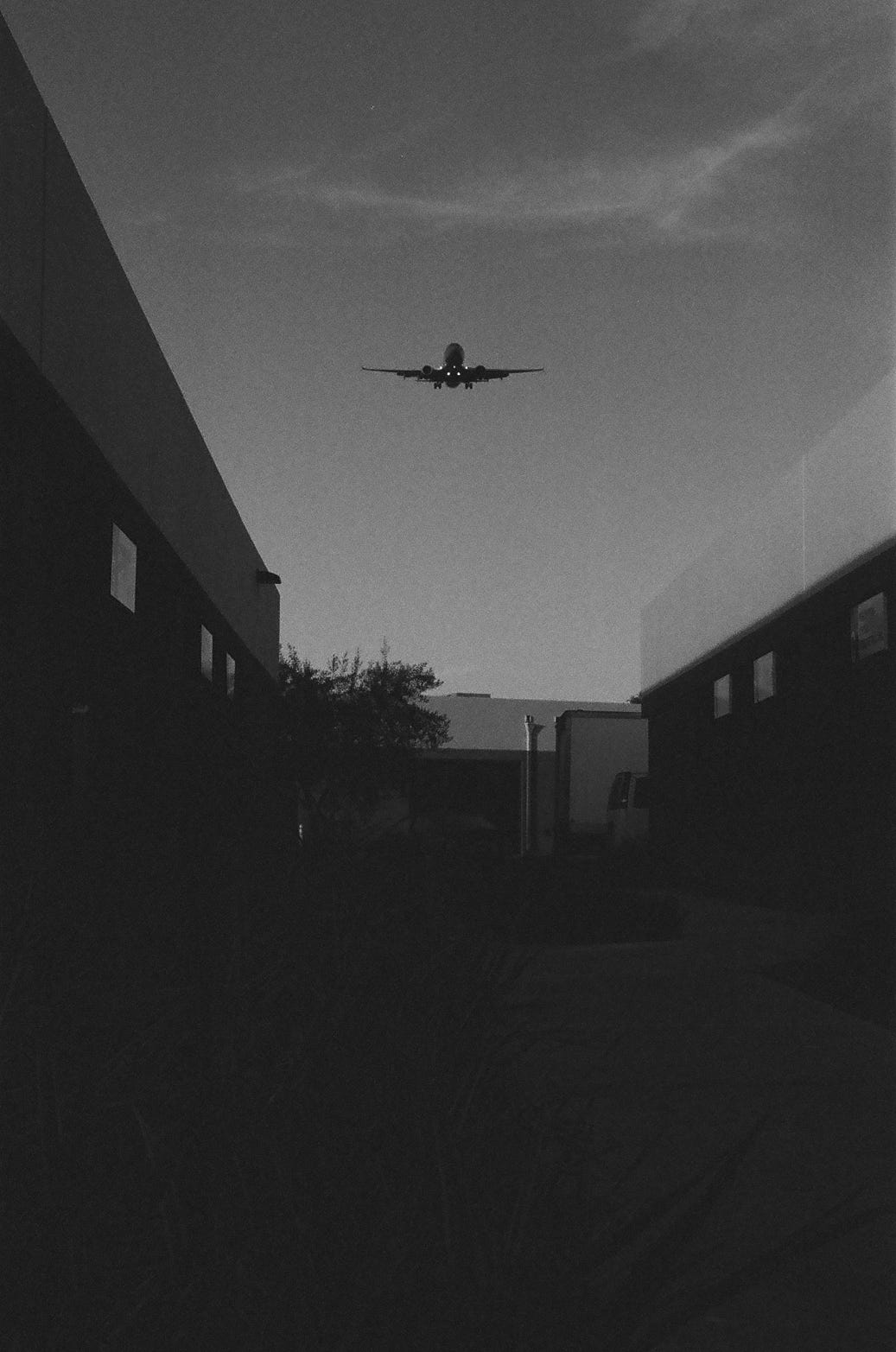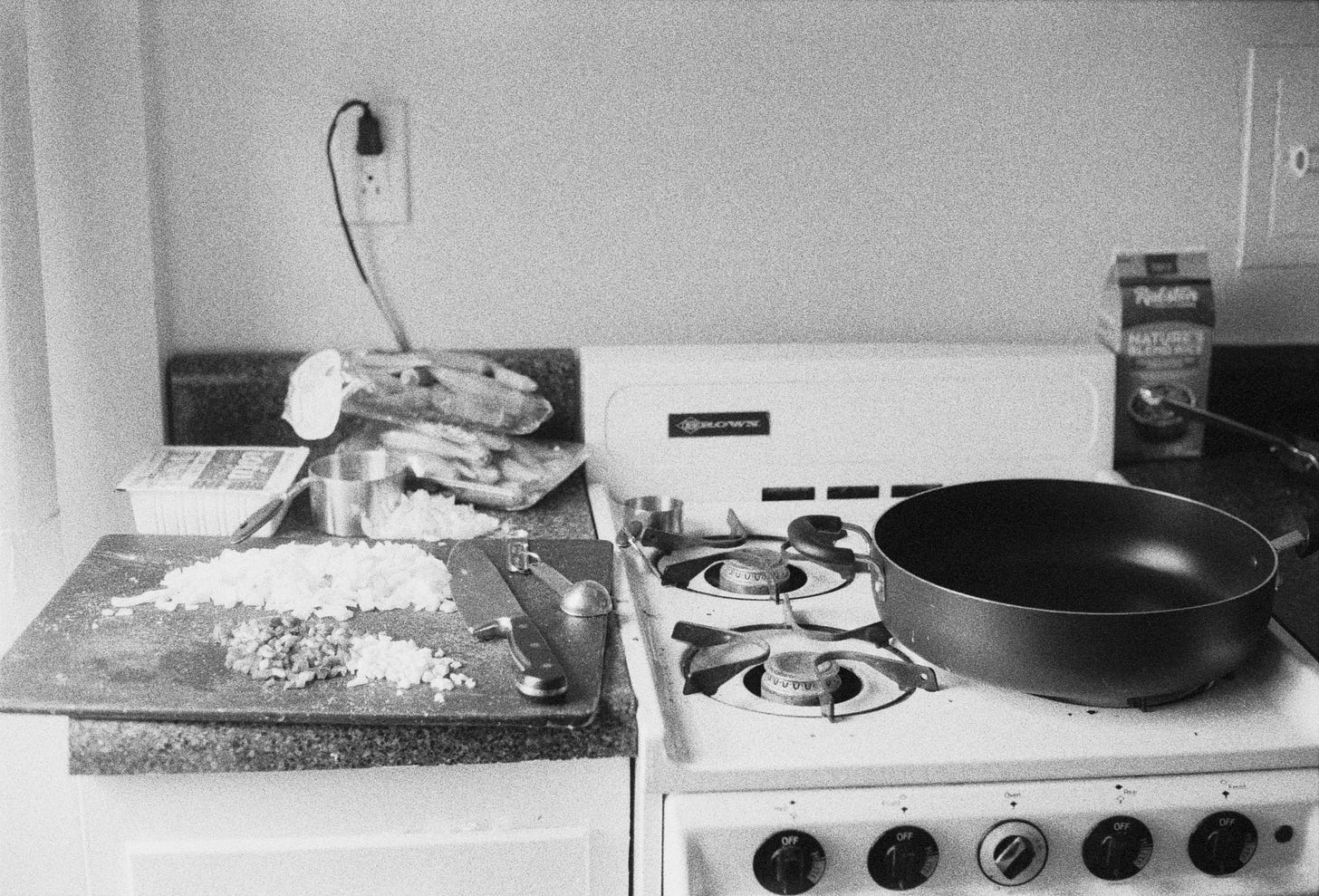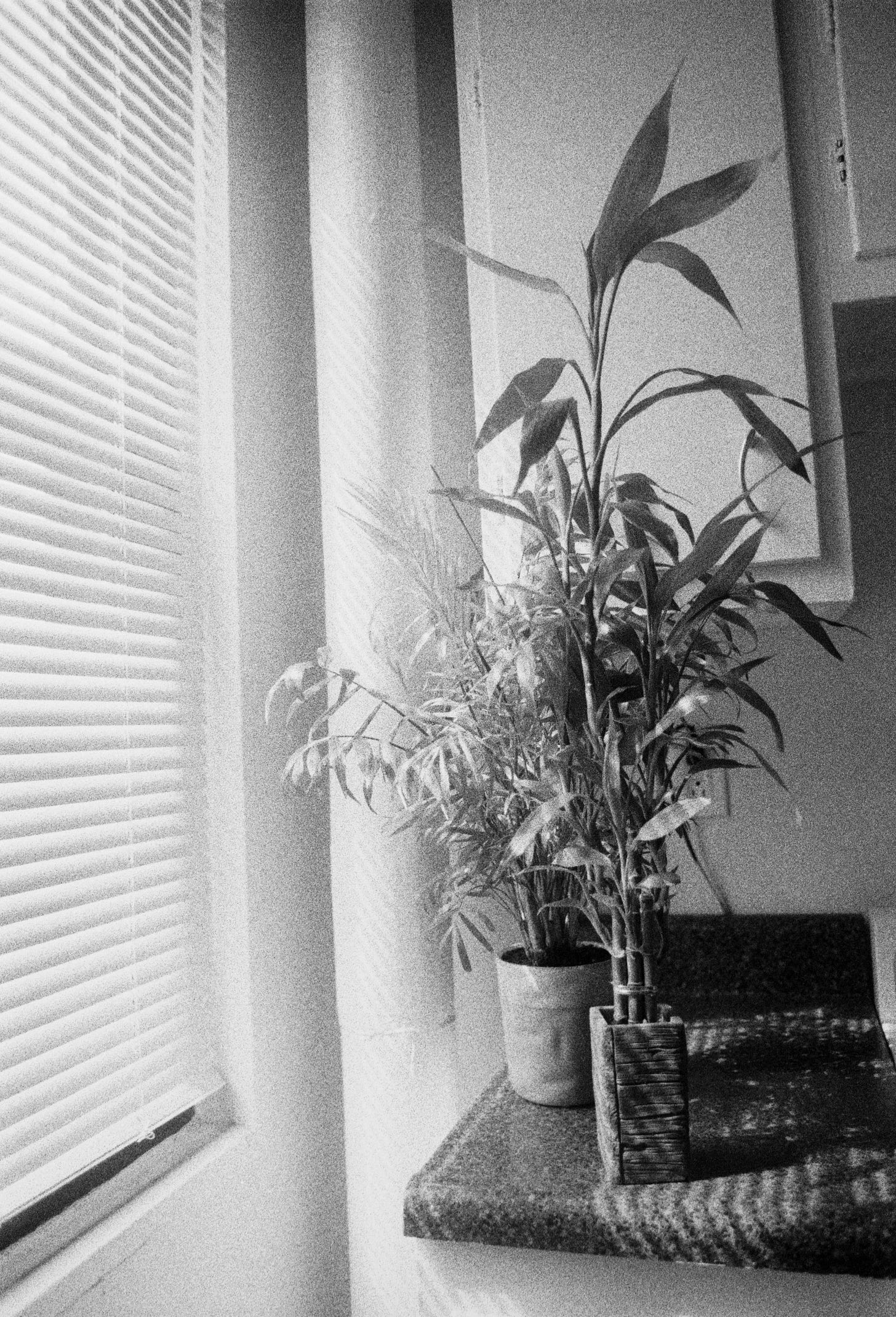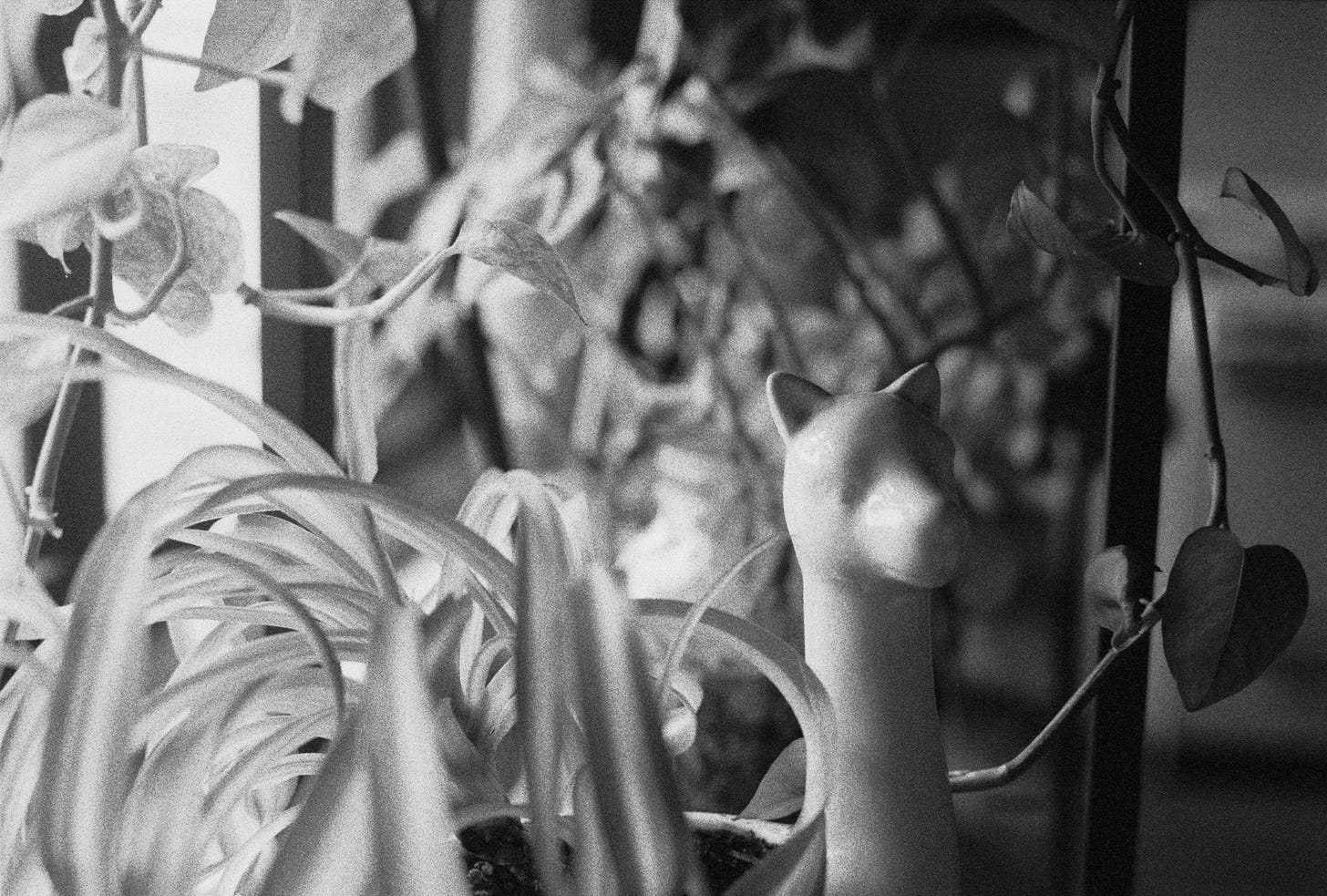Overview
Kodak Professional T-Max P3200 is one of the highest speed films on the market. It’s actually an 800 speed film meant to be pushed 2 stops, and is one of the only black and white films over 400 ISO available at time of writing. While this sensitivity means you can shoot in low light situations other films might struggle with, it also means significantly more grain. Depending on the retailer, you can find it for $13-$15, a tad cheaper than Delta 3200, its Ilford alternative.
Eric’s Thoughts
Cameras: Nikon FE2 (Nikkor 50mm f/1.4 AI)
Metering: EI3200 (developed at box speed)
Development: Pro Photo Connection (Ilford Ilfotec DD)
Scanning: Noritsu (lab scanned)
All photos posted as scanned, no crops, edits, etc.
I really enjoy shooting at night and in low light (one of the driving reasons for going with full-frame Sony was high ISO performance), and I was excited to try T-Max P3200 specifically for this reason. Unfortunately, as my other camera is currently loaded with Ektachrome 100, this roll ended up being used as a general use roll. To my surprise, however, I really liked the results!
I shot 37 frames, and in another camera, I definitely could have shot more. (I’ll write about the FE2’s quirk when loading eventually…) I have heard that the best results developing are with Kodak T-Max developer, but my lab uses Ilfotec DD for all B&W film.
I went in expecting significant grain as a tradeoff for the sensitivity, but I was pleasantly surprised with the quality of the grain—I really like the appearance, and other than a frames with extreme contrast where the grain looks really crunchy, the grain is overall really pleasing and even, lending a nice look to most photos.
Used uncropped, the grain is perfectly usable across most situations, but cropping in does show a clear loss in resolution that limits this film. For a full frame, however, it’s perfectly usable in all cases.
Contrast was pretty good—obviously, this film lends itself to shooting very high-contrast situations. In daylight, I think it has a pleasing contrast that shows some shadow detail while retaining some of that iconic “film” Tri-X look.
I was pretty satisfied with my metering, and will likely continue to meter at 3200 moving forward. I will note that the camera will probably underexpose for most of the uses of this film (at night outdoors, under artificial light), so it may make sense to just expose 1 stop over as a default, as there is enough latitude to allow for the overexposure in more even lighting.
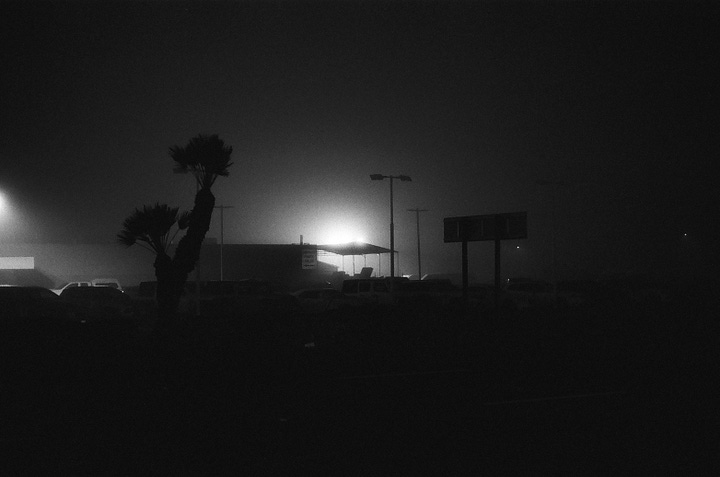

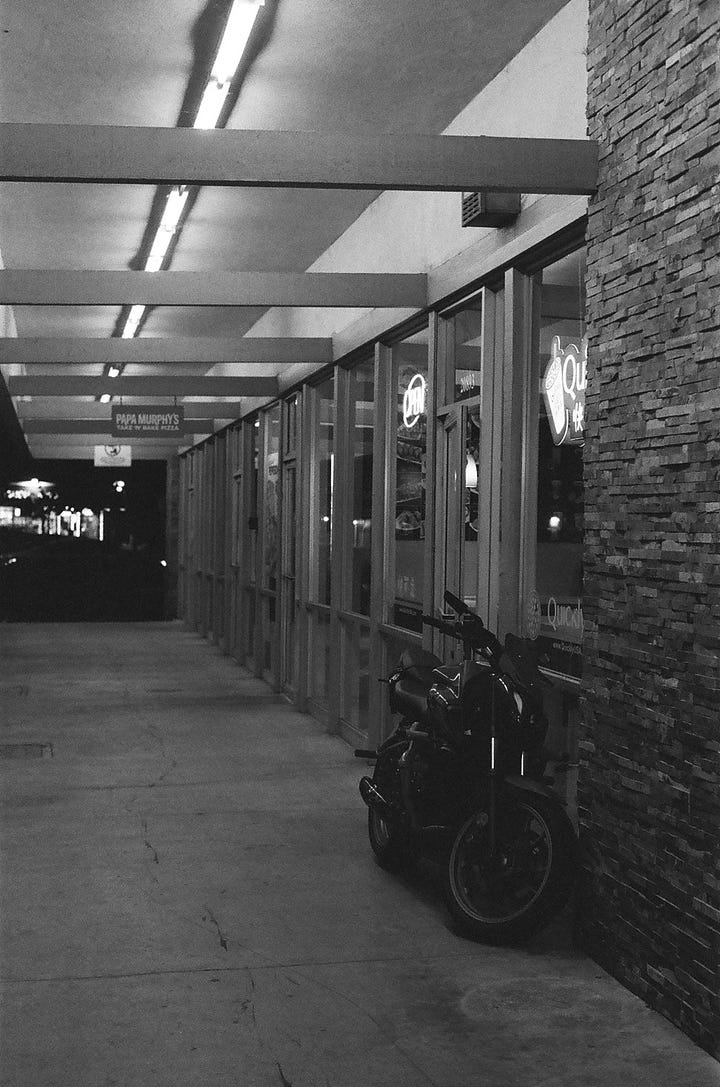
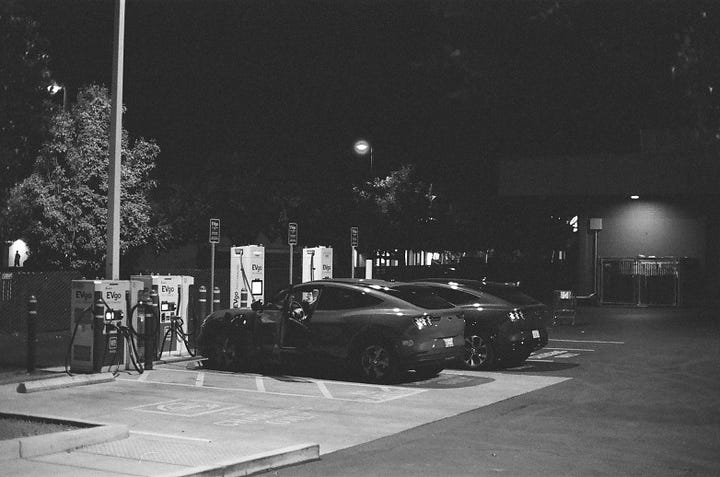
I’m excited to try Ilford Delta 3200 in comparison, but overall I really enjoy this film and will probably keep a roll around for anything indoor when the need arises. This is a film I could have used in Hawaii, as it’s 1 stop faster than the HP5 I pushed 2 stops. It’s not a great all-around film, but honestly, it works well in a pinch.
Andrew’s Thoughts
Camera: Canon AE-1 (Canon new FD 50mm f1.8 and 28mm f2.8 lenses)
Development: Full Circle Fine Art
Scanning: Plustek 8200i SE, Silverfast 9
My hope with this film was to be able to shoot handheld indoors, though I had a lot of questions going in about how to meter it. You’ll find numerous opinions online regarding this. Meter at 1000 and develop at 1000, meter at 1600 and develop at 1600, meter at 1600 and develop box speed, meter at 3200 and develop at box speed… I wasn’t sure where to start. Given my proclivity to meter a half stop overexposed for other films, I figured I’d meter in the 1600-2400 range and develop at box speed.
I almost squeezed 37 shots out of the roll; if I had been more careful loading I definitely could have (and in later rolls this was the case). Silverfast 9’s Negafix did not have a profile for T-Max P3200, so I used T-Max 400 and adjusted from there.
Grain lovers rejoice. At 3200 ISO, what else would you expect? It may not be for everyone, but there also isn’t much choice if you want a fast film; bring a flash or tripod if you need fine grain. Based on different sample images online, it seems like there can also be a quite bit of variability in grain based on development process. Unfortunately, I can’t comment on this much since I’m at the mercy of my lab, and I’m not sure exactly how they develop. I also didn’t notice much difference in grain with different exposures.
It’s worth highlighting potential differences in grain due to postprocessing as well. Below, I’ve compared a section of one of Eric’s photos with 4 other versions from one of my scans, with varying levels of denoising and resolution.

It’s clear that some of the differences you see in grain between our photos are due to resolution, and sharpening/denoising applied while scanning can also have an effect. This variability, along with variability due to development process, is always the case for any film, but is especially pronounced with high speed films like T-Max P3200. How much it matters to you will depend highly on your use case and preferences.
The film has less latitude than the lower speed films I usually use, but it’s still relatively forgiving. I made the mistake of metering for the shadows on a few frames, even though my subject was well lit. Despite this overexposure, the results turned out usable and I was surprised by how much detail I could still get. As with other films, underexposure is a bit more problematic, but I think photos up to -1 stop are still serviceable. I might try overexposing a bit less in future shots, perhaps between -1/2 to 0 stops below box speed.



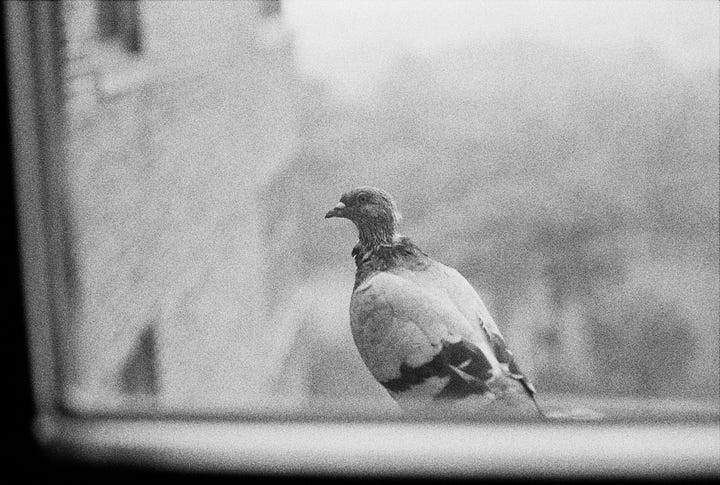
While the amount of grain surprised me at first, it’s grown on me a lot. Even if I hated it, there isn’t much choice for high speed film, and it did achieve the goal of reasonable shutter speeds in most indoor lighting. I recently shot a roll of Ilford Delta 3200 that I slightly prefer (review coming soon), but I’d have no hesitation about taking T-Max P3200 along for indoor shoots. Another alternative is to push a 400 speed film, though my lab charges per stop pushed, so it’s not particularly economical if you’re doing 3 stops.





